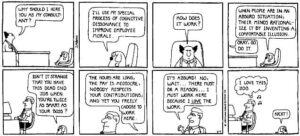It is basic nature to view ourselves in the best light possible. However, when we act in ways which do not align with our attitudes, it can lead to a feeling of discomfort. This is explained by Leon Festinger’s (1957) theory of cognitive dissonance which demonstrates how tension is experienced when behavior and attitude are inconsistent.
Festinger’s (1957) theory has been the subject of countless experiments to further understand the way in which individuals cope with tension. The results of these experiments have been beneficial for understanding persuasive arguments, social justice, and prejudice.
There are three methods to reduce this feeling of discomfort and tension when experiencing cognitive dissonance.
- Changing the behavior.
- Attempting to justify the behavior through changing the cognition.
- Attempting to justify the behavior by adding a new cognition.

For example, imagine you are watching Netflix rather than working on homework. You experience tension because you know you should be working on homework but are actively choosing not to. In order to reduce the tension of behavior and attitude being inconsistent, you will do some combination of these three things:
- Change the behavior by not watching that next episode and working on homework instead.
- Change the attitude by thinking it is okay to be watching Netflix because homework is stressful.
- The third option is to add a cognition such as telling yourself you never have time to relax and it is good to take time for yourself.
By using one or more of these three methods, cognitive dissonance will be reduced and you will feel less tension.
By justifying the attitude or the behavior, individuals are able to reduce the tension and better able to cope with the inconsistencies. The internal justification provides a reason and explanation. Every time we make decisions, we are engaging in dissonance. Many times there are doubts about the decision and there is contemplation for alternative options.
It is important to be aware of the methods to resolve the feeling of dissonance and how it impacts attitude and beliefs.
Dr. Bo Bennett further explains the theory of cognitive dissonance.
http://https://www.youtube.com/watch?v=gN-6nBs7sbI
Festinger, L. (1957). A theory of cognitive dissonance, Row Peterson.